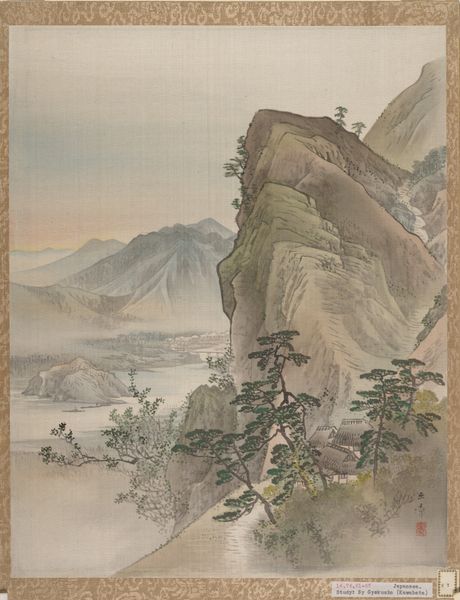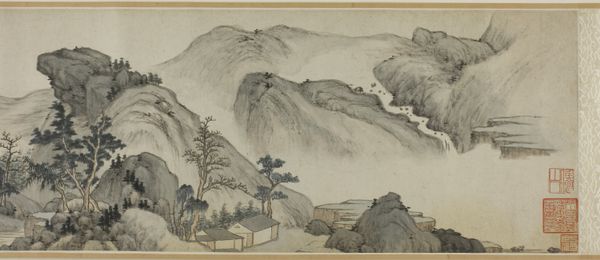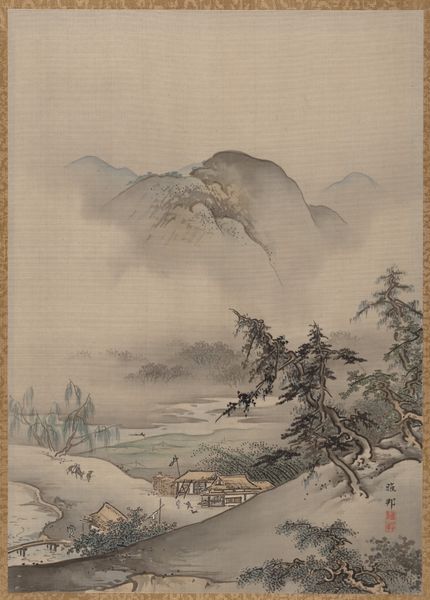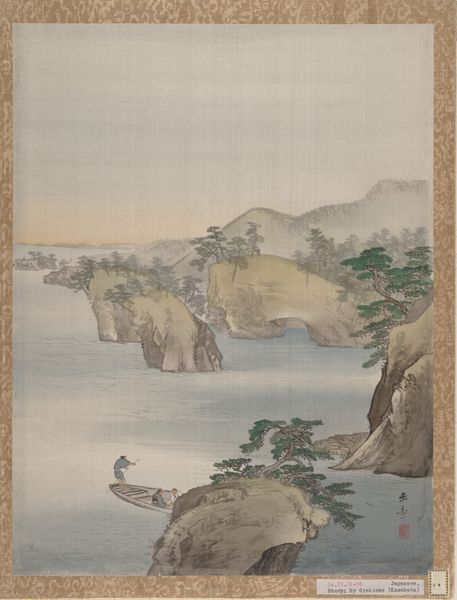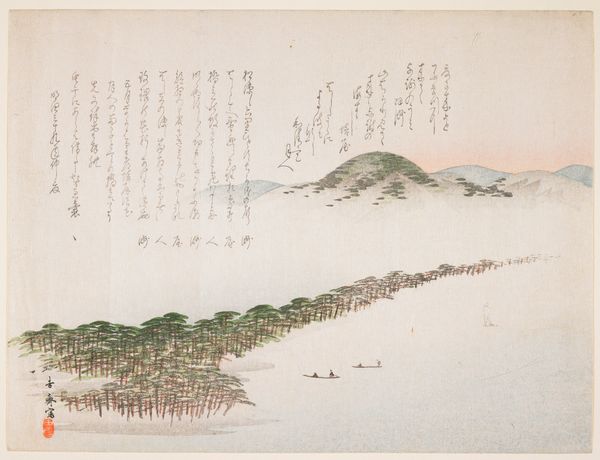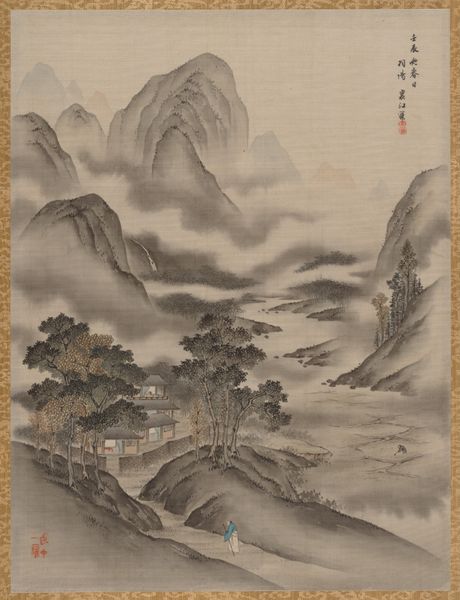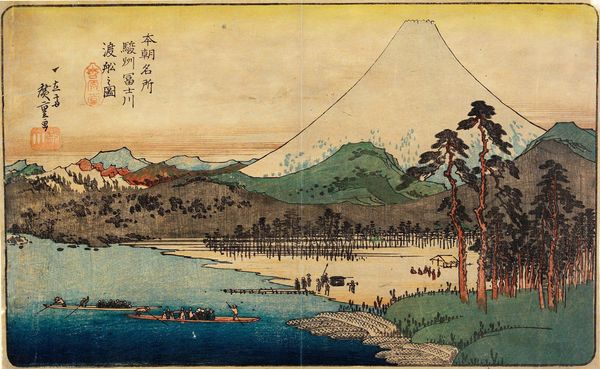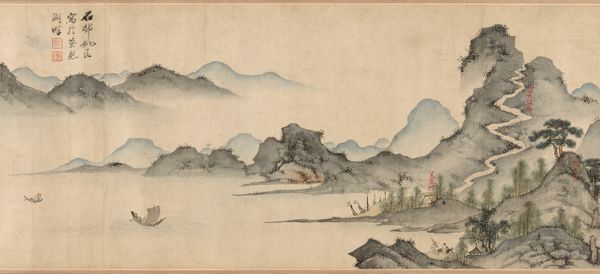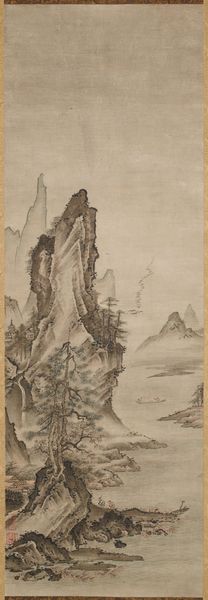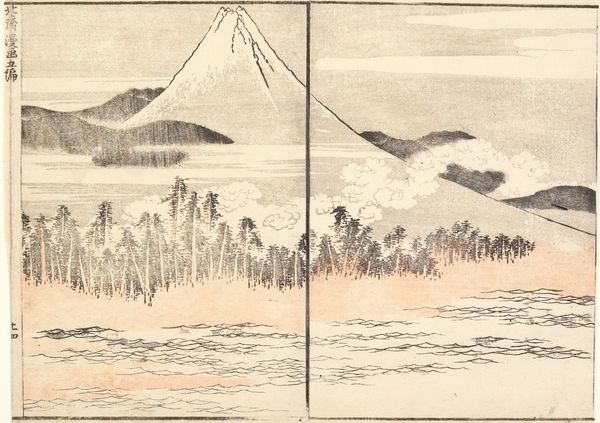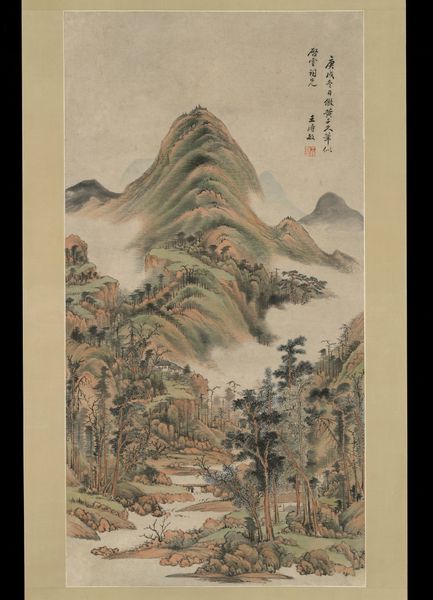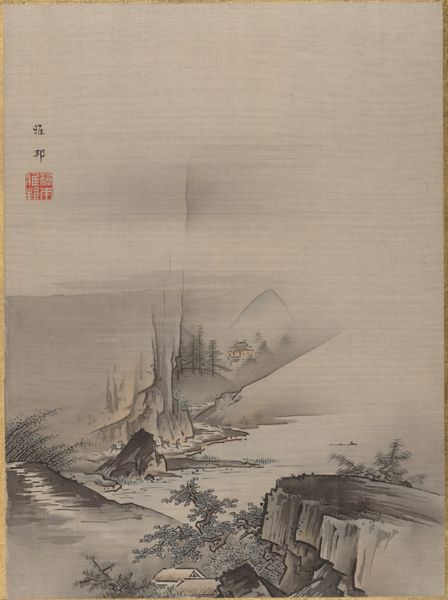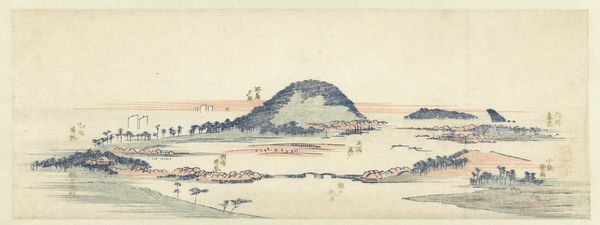
Dimensions: 14 1/2 x 11 1/8 in. (36.8 x 28.3 cm)
Copyright: Public Domain
Editor: This is "Blossoms by a River" by Kawabata Gyokushō, painted between 1887 and 1892. It's a watercolor. I'm struck by how delicate the composition is; everything seems to blend softly into the landscape. What stands out to you? Curator: I observe a clear hierarchy established through compositional elements. Notice how the mountain in the background, rendered with subdued tonality, serves as a visual anchor, dominating the pictorial space. The blossom trees create a dynamic interplay with the solid forms. Editor: The blossoms definitely add texture. Is that interplay between form and texture a key component? Curator: Indeed. The artist masterfully utilizes line and wash techniques. Gyokushō uses broad, fluid washes to describe atmospheric perspective. These horizontal lines define the space, whilst the intricate brushwork distinguishes textural variance among individual components. How do you think Gyokushō utilized these elements? Editor: I think he contrasts line and texture to differentiate objects from each other. The dark brushstrokes outlining the trees in the foreground draw your eye forward, emphasizing their importance relative to the soft shapes in the background. Curator: Precisely. What semiotic interpretation could we draw from this foreground-background dynamic? The composition is divided into two components and arranged vertically to direct our reading from foreground to background, with blossoms being visually closer. The composition encourages a close reading of this artistic expression of balance. Editor: I see what you mean! I’ve been so focused on the technique, but framing the piece structurally sheds new light on the entire piece. Thank you! Curator: My pleasure. Paying attention to form can certainly transform one's interpretation of art.
Comments
No comments
Be the first to comment and join the conversation on the ultimate creative platform.
